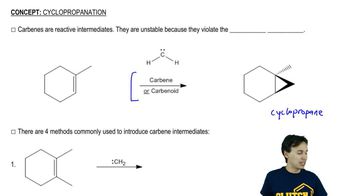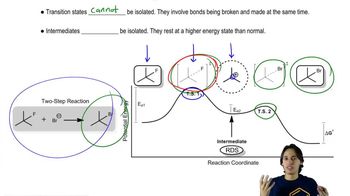Textbook Question
Show how you would accomplish the following conversions.
b. cis-hex-3-ene to (d,l)-hexane-3,4-diol

 Verified step by step guidance
Verified step by step guidance Verified video answer for a similar problem:
Verified video answer for a similar problem:



 4:34m
4:34mMaster Acid-Catalyzed Epoxide Ring-Opening with a bite sized video explanation from Johnny
Start learning